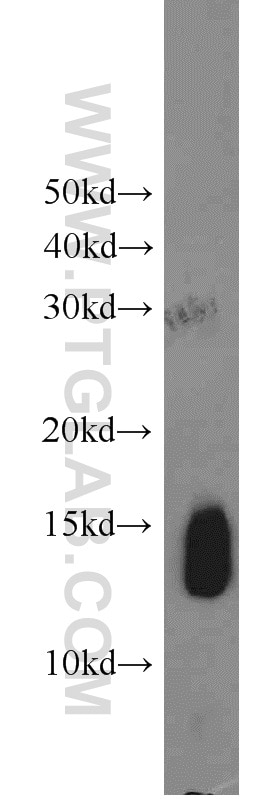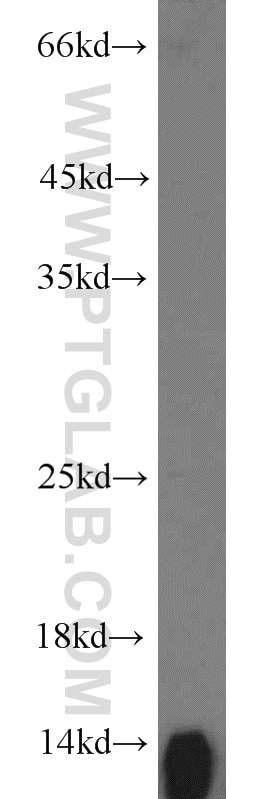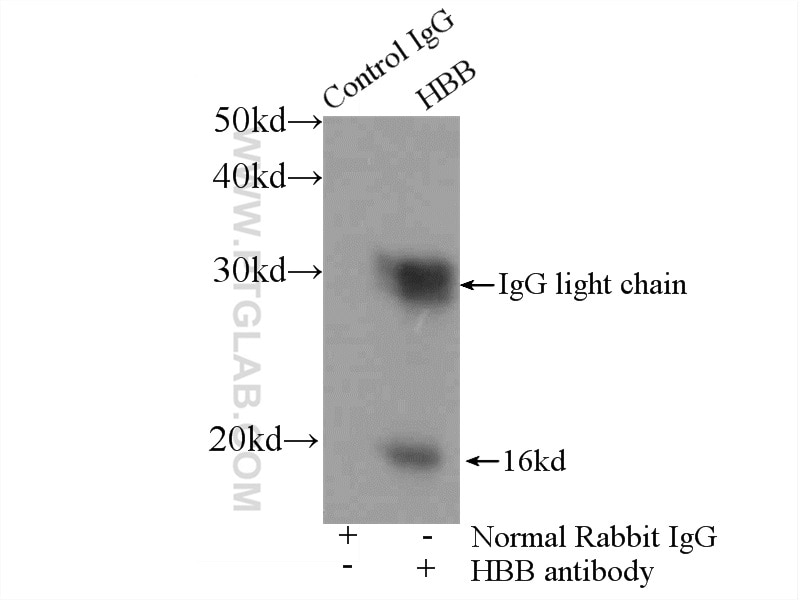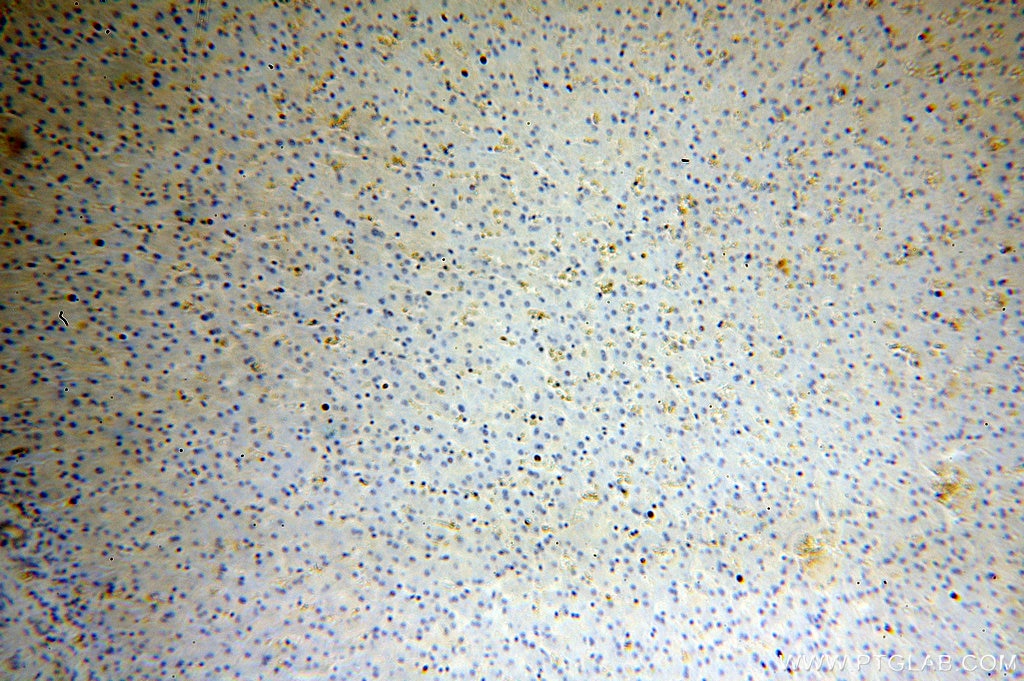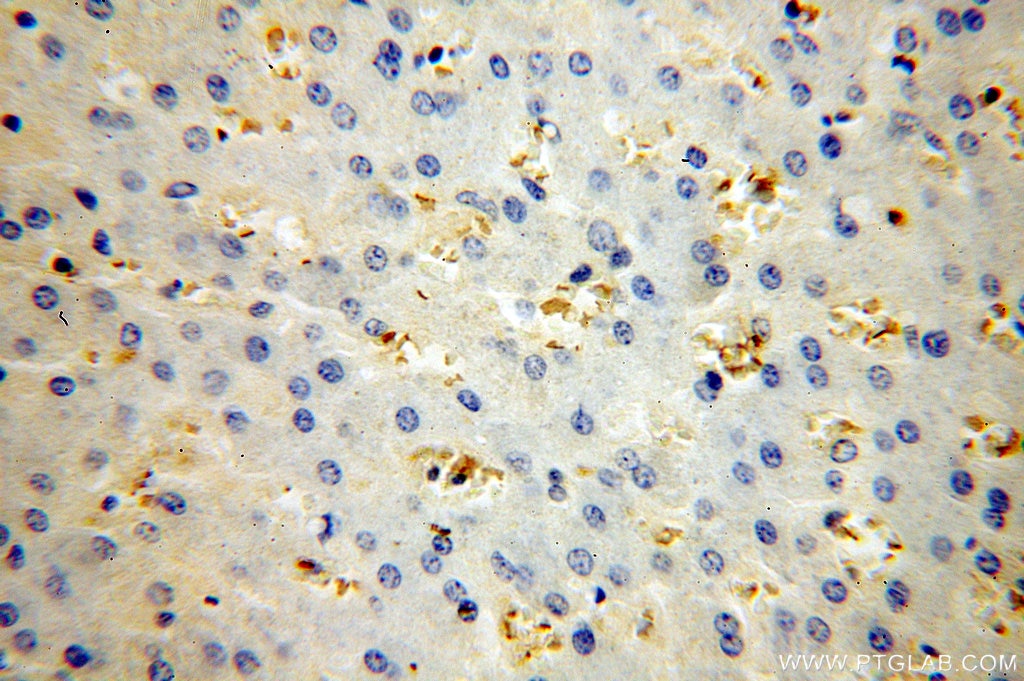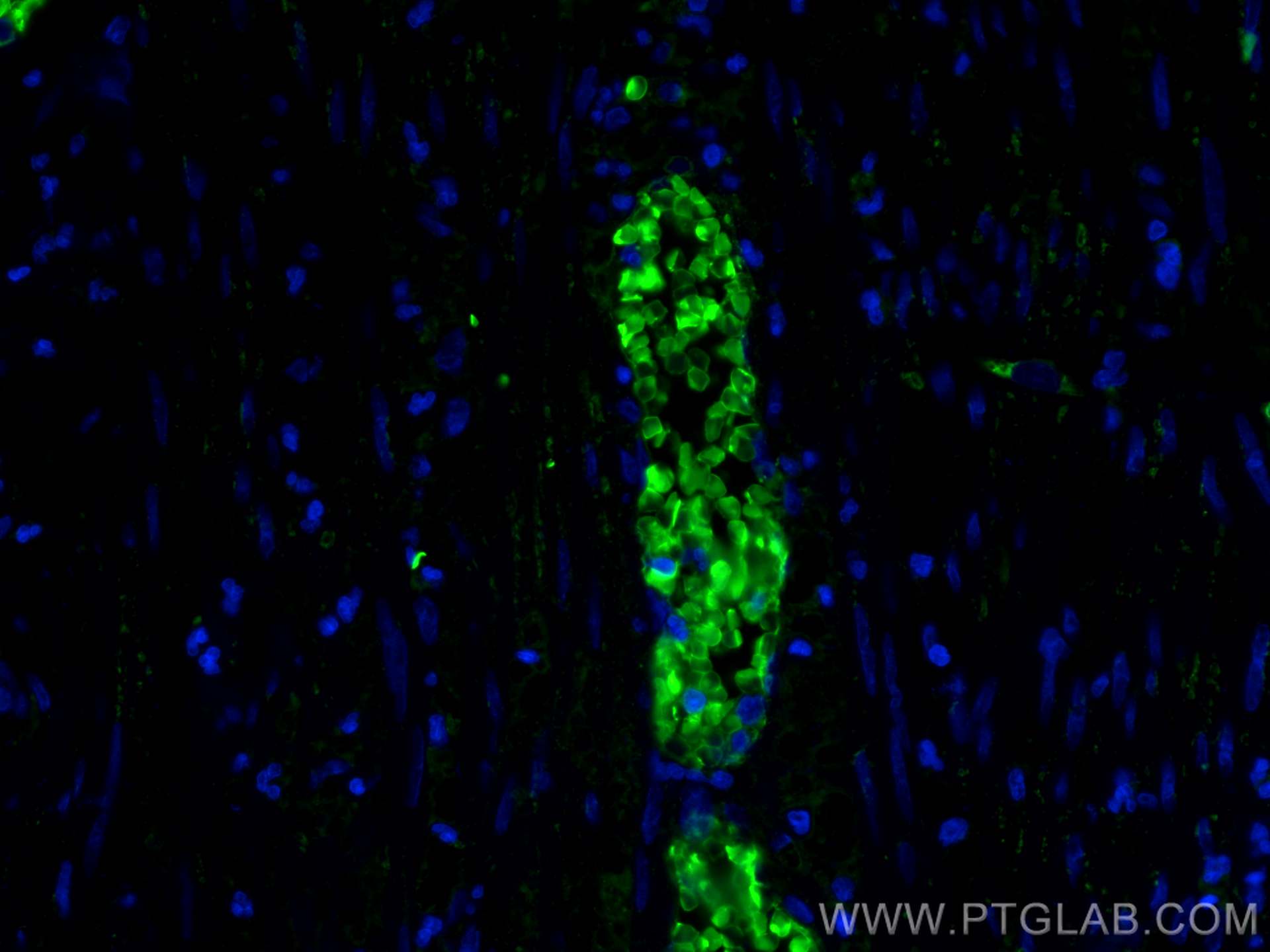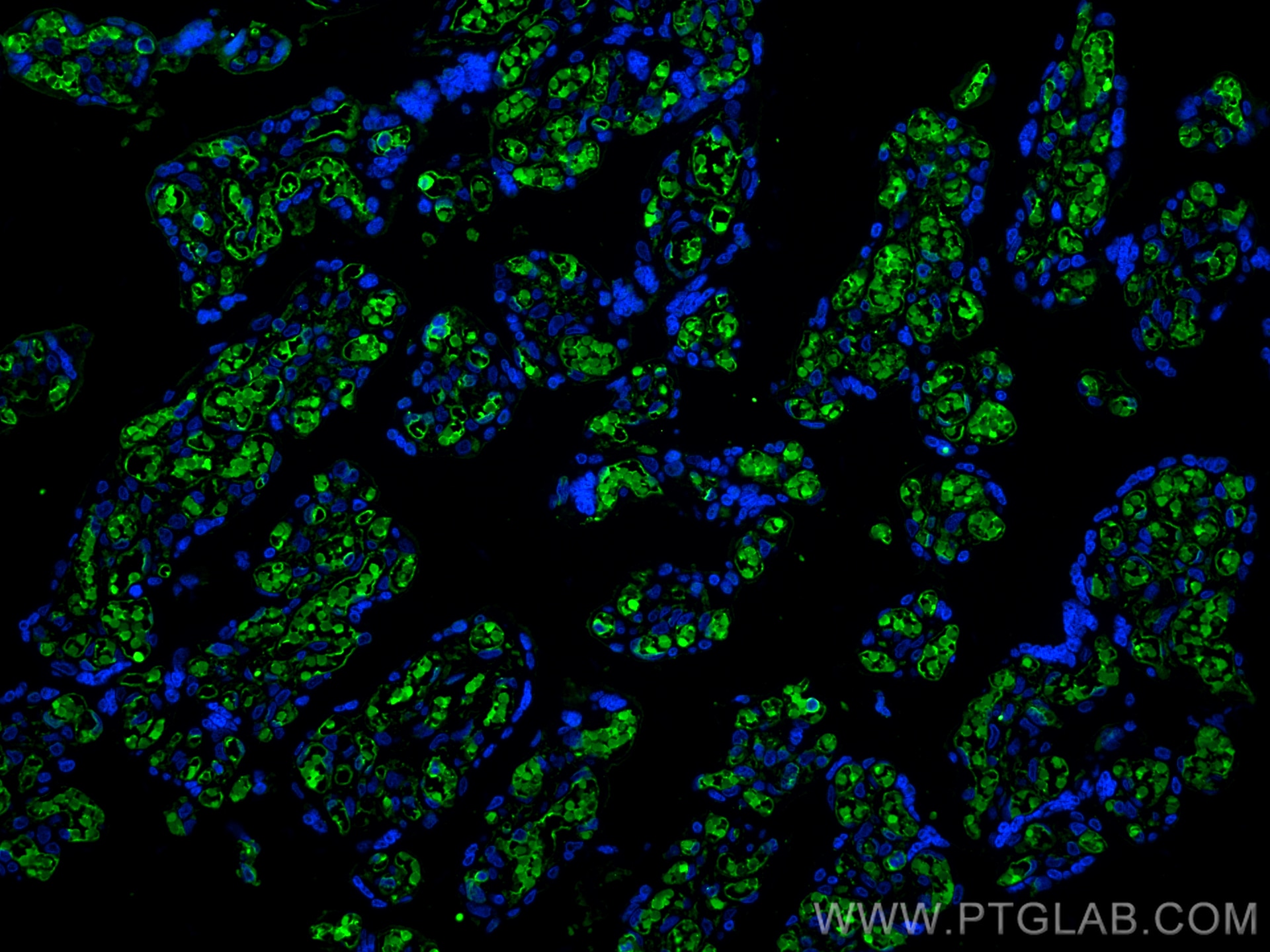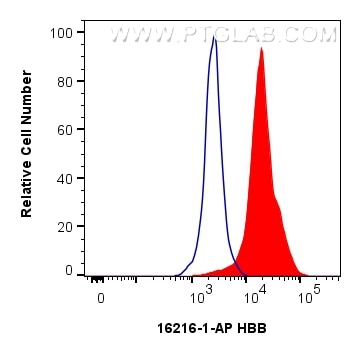Anticorps Polyclonal de lapin anti-HBB
HBB Polyclonal Antibody for WB, IHC, IF-P, FC (Intra), ELISA
Hôte / Isotype
Lapin / IgG
Réactivité testée
Humain, souris et plus (1)
Applications
WB, IHC, IF-P, FC (Intra), ELISA
Conjugaison
Non conjugué
N° de cat : 16216-1-AP
Synonymes
Galerie de données de validation
Applications testées
| Résultats positifs en WB | tissu cardiaque humain, tissu placentaire humain |
| Résultats positifs en IHC | tissu hépatique humain il est suggéré de démasquer l'antigène avec un tampon de TE buffer pH 9.0; (*) À défaut, 'le démasquage de l'antigène peut être 'effectué avec un tampon citrate pH 6,0. |
| Résultats positifs en IF-P | tissu d'appendicite humain, tissu placentaire humain |
| Résultats positifs en FC (Intra) | cellules K-562, |
Dilution recommandée
| Application | Dilution |
|---|---|
| Western Blot (WB) | WB : 1:1000-1:4000 |
| Immunohistochimie (IHC) | IHC : 1:20-1:200 |
| Immunofluorescence (IF)-P | IF-P : 1:50-1:500 |
| Flow Cytometry (FC) (INTRA) | FC (INTRA) : 0.80 ug per 10^6 cells in a 100 µl suspension |
| It is recommended that this reagent should be titrated in each testing system to obtain optimal results. | |
| Sample-dependent, check data in validation data gallery | |
Applications publiées
| WB | See 7 publications below |
| IHC | See 3 publications below |
| IF | See 1 publications below |
Informations sur le produit
16216-1-AP cible HBB dans les applications de WB, IHC, IF-P, FC (Intra), ELISA et montre une réactivité avec des échantillons Humain, souris
| Réactivité | Humain, souris |
| Réactivité citée | rat, Humain, souris |
| Hôte / Isotype | Lapin / IgG |
| Clonalité | Polyclonal |
| Type | Anticorps |
| Immunogène | HBB Protéine recombinante Ag9216 |
| Nom complet | hemoglobin, beta |
| Masse moléculaire calculée | 147 aa, 16 kDa |
| Poids moléculaire observé | 13-16 kDa |
| Numéro d’acquisition GenBank | BC007075 |
| Symbole du gène | HBB |
| Identification du gène (NCBI) | 3043 |
| Conjugaison | Non conjugué |
| Forme | Liquide |
| Méthode de purification | Purification par affinité contre l'antigène |
| Tampon de stockage | PBS with 0.02% sodium azide and 50% glycerol |
| Conditions de stockage | Stocker à -20°C. Stable pendant un an après l'expédition. L'aliquotage n'est pas nécessaire pour le stockage à -20oC Les 20ul contiennent 0,1% de BSA. |
Informations générales
The hemoglobin molecule is a tetramer consisting of two alpha- and two beta-globin-like chains. HBB gene encodes hemoglobin beta chain. The hemoglobin chains, each with its own heme moiety, cooperate in binding and release of oxygen. Hemoglobin monomers have been found in blood and other tissues including macrophages, alveolar epithelial cells and brain. Defects in HBB have been linked to diseases including Sickle cell anemia, Beta-thalassemia, and Heinz body anemias. This antibody, raised against the full-length human HBB, recognizes the 13-16 kDa HBB in western blot analyses of human heart and placenta.
Protocole
| Product Specific Protocols | |
|---|---|
| WB protocol for HBB antibody 16216-1-AP | Download protocol |
| IHC protocol for HBB antibody 16216-1-AP | Download protocol |
| IF protocol for HBB antibody 16216-1-AP | Download protocol |
| IP protocol for HBB antibody 16216-1-AP | Download protocol |
| Standard Protocols | |
|---|---|
| Click here to view our Standard Protocols |
Publications
| Species | Application | Title |
|---|---|---|
Nat Commun Macrophage lineage cells-derived migrasomes activate complement-dependent blood-brain barrier damage in cerebral amyloid angiopathy mouse model | ||
Elife ARID1A loss in adult hepatocytes activates β-catenin-mediated erythropoietin transcription. | ||
Stem Cells Notch and Aryl Hydrocarbon Receptor Signaling Impact Definitive Hematopoiesis from Human Pluripotent Stem Cells. | ||
Blood Cells Mol Dis A long noncoding RNA from the HBS1L-MYB intergenic region on chr6q23 regulates human fetal hemoglobin expression. |
